
Hike Big Cypress and see nature at best
OCHOPEE, Fla.— At the edge of civilization where ecosystems meet and mesh with one another, were fantastic creatures co-exist in a web of exuberant life; that is where you will find the Big Cypress National Preserve.
The day is cooler, but still sunny —- a perfect day to go on a hiking expedition. It is the beginning of the dry season at the preserve. This is the start of the time when things get really interesting.
The main and only visitor gathering place of the preserve, the Oasis Visitor Center, is found along of the Tamiami Trail (or U.S. Highway 41). This road lies between Miami and Naples, with Miccosukee Indian attractions, man-made canals and Florida International University along the way.
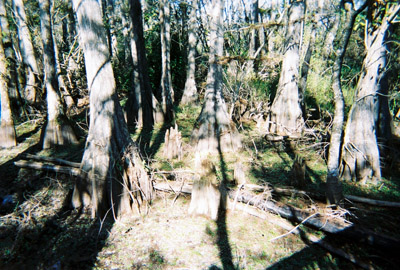 |
Cypress trees give the preserve its name (Photos by Erick Cipau). |
Once you get into the preserve, however, things are different.
“It’s not buildings and blacktop, it’s cypress and swamp,” said Joe Pytel, a volunteer guide at the preserve.
He is quite right, of course, the only connection that the preserve has to the urbanized world are two stretches of highway that run through it in the north and in the south.
This 729,000 acre section of land, established in 1974, is a preserve as opposed to a park. On a preserve you are allowed to do more with the land. That means activities like ridding around in an off-road vehicle (ORV), hunting, even oil drilling are allowed on the Big Cypress National Preserve, however they are not allowed a few miles south at the Everglades National Park.
While they are part of the same geographical region, there are several things that further set Big Cypress apart from the Everglades National Park. First off, the amount of land to water ratio is flipped between the two. There is more land to set foot upon in the Big Cypress, making it more suitable for hunting and off-roading, while there is more water that runs through the Everglades park.
More than 60 inches of rain fall on the grounds of the preserve every year. This is one of the highest totals in the nation.
Big Cypress contains only fresh water within its boundaries and most of that does not go over a foot in depth. The preserve is considered a swamp and got its name from the Cypress trees that populate the terrain.
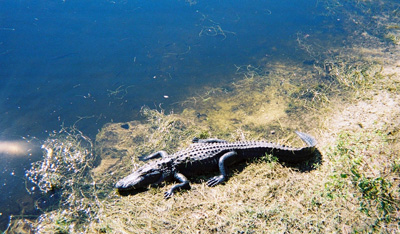 An amazing cycle of life takes place every year in the preserve affecting the flora and fauna.
An amazing cycle of life takes place every year in the preserve affecting the flora and fauna.
The algae, parafiten, which grows on most of the plant life underwater serves as a base for the food chain that goes all the way up to the alligator at its top.
In the winter, the dry season, water is steadily evaporated until only small pockets of water remain. Most of the wildlife will converge on these areas in a search for food. Therefore the winter is the best time for wildlife viewing.
In front of the Oasis Visitor Center, you will find a strip of boardwalk overlooking a small canal that looks so ordinary that you would pay it no mind. But once you dip your head over, you will find something truly astonishing.
The boardwalk transforms into a gator observation deck as its true purpose is revealed. It is a little chilly outside and a perfect day for the gators to show themselves to warm their cold-blooded bodies in the sun.
What a turn out it is! At one point there were 16 alligators just around the limited expanse of the boardwalk.
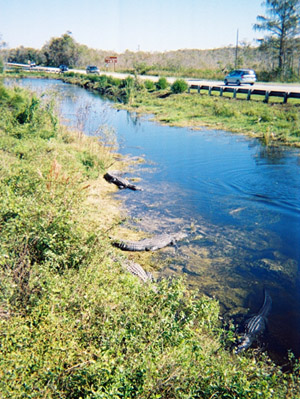 Some are swimming around in their lazy but eerie fashion with their stubby legs pressed flush against their body for better hydrodynamic movement.
Some are swimming around in their lazy but eerie fashion with their stubby legs pressed flush against their body for better hydrodynamic movement.
Others are still as statues and look like they have been that way for a while as their back scales have been dried thoroughly to a dull, dark green.
Taking a stroll along the Kirby Storter Boardwalk provides an excellent opportunity to check out the different types of vegetation in the park and also to see drastic change between the areas with water and those without.
The boardwalk extends out to the pavement at its beginning and stretches out into unseen wilderness.
At first you are met with a wide expanse of faded, dry-looking, long grass dotted with small cypress trees shooting out of random spots in the ground.
Along the walk you may observe how exquisite a method of experiencing the preserve this boardwalk really is. It looks like an ordinary long dock with high railings, except this dock is over a sea of not water, but grass.
You are able to move through the environment as you would if you lived there, only you are not getting cut and itched by the vegetation, and you are elevated so that you can see more.
Further down the trail you come into contact with your second environmental zone as if you just stepped into another room.
Now the trees are taller and the vegetation is thicker. You may notice that the further down the walkway that you move, the wetter it gets.
Eventually you get to an area where the floor alters completely and the ground gives way to standing water. The trees around the water look different around their bases. They look as if they have begun to root off above the ground and take on a veiny appearance.
The train culminates with a gorgeous outlook over a pond. At least there should be a pond there.
| A visitor walks along the boardwalk in part of the preserve (Photos by Erick Cipau). | 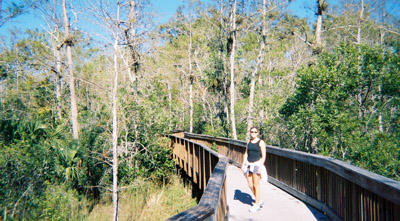 |
The water is covered by green water plants with long stems and thick, flat leaves at their tops. It almost looks like you could simply step over the edge and walk on these, like grass, over to the other side.
Spanish moss drapes down over the pond and the bugs chirp softly in the background. The sun is shinning warmly and softly and there is a cool breeze in the air.
There should be a rocking chairs placed along that dock especially at this spot for those to relax and take in the natural splendor before their eyes. This is a perfectly peaceful spot.
Depending on where you go, there are some things that you might want to keep in mind.
“Bring an extra pair of shoes and a few plastic bags if you go,” said Cecile Daniels who works at the bookstore at the Oasis Visitor Center.
Unlike the boardwalk, other areas are wilder and therefore may have more hazards or more wetness.
Cecile feels she has an obligation to pass on bits of knowledge and help those appreciate the environment they are about to enjoy.
“It’s important for parents to teach their kids to appreciate nature,” said Daniels.
She follows her own example.
“I raised my children to enjoy camping out and things like that,” said Daniels
Others share her feelings.
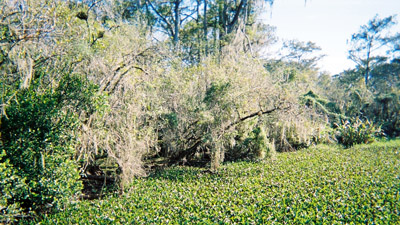 “It is satisfying for me to teach others about the environment, because it is important,” said Joe Pytel.
“It is satisfying for me to teach others about the environment, because it is important,” said Joe Pytel.
His wife, who also volunteers at the Visitor Center, agrees
“We get more from it than we give,” said Lee Pytel.
They thoroughly enjoy the parks in the national park system.
They have worked in parks across the country, from Yellowstone National Park to South Florida.
They feel that there can be more done to help the park systems.
“I wish Washington would give more money to the park system,” Joe Pytel offered.
Nature is something that should be cherished and enjoyed is the message that those who work for the preserve wish to pass on to those who visit the area. This is a message that most who visit are sure to get.
“Just open up your eyes. It’s nature and It’s beautiful,” said Daniels.
If You Go
- HOURS OF OPERATION: the Oasis Visitor Center is open from 9 a.m. to 4:30 p.m. every day except for Christmas.
- TELEPHONE: Oasis Visitor Center 239-695-1201.
- WEB SITE: http://www.nps.gov/bicy/
- LOCATION: The visitor center is located along U. S. 41 (Tamiami Trail), 50 miles west of Miami and 50 miles east of Naples. The Preserve Headquarters is located near Naples and Everglades City, along U.S. 41, five miles east of the State Road 29 intersection.
- FEES AND ADMISSIONS: most things in the park are free, such as general entrance and access to nature trails. Overnight stay at some campground locations varies in price. A permit is required to use an off-road vehicle in the preserve.
- Be sure to bring an extra pair of shoes or boots and appropriate containers for them, depending on the trail you choose, or if you go hiking during the wet season.
- Be wary of your surroundings, snakes and alligators are dangerous and plentiful in the area. They are also protected so don’t harass them.
- Use caution when around the highway. Cars travel by very fast so allow proper time for maneuvers and pull well off the road.
- Signs appear very quickly so allow enough time to stop and do not tailgate.
- Bring sunscreen and bug spray, especially for the wet season.
- Go to the Oasis Visitor Center and ask the helpful workers there for information for your trip.

Comments are Closed